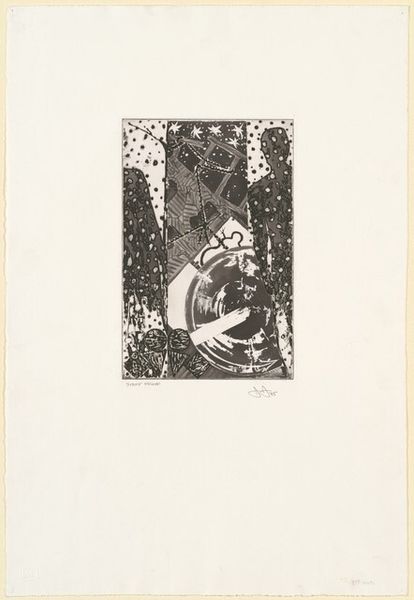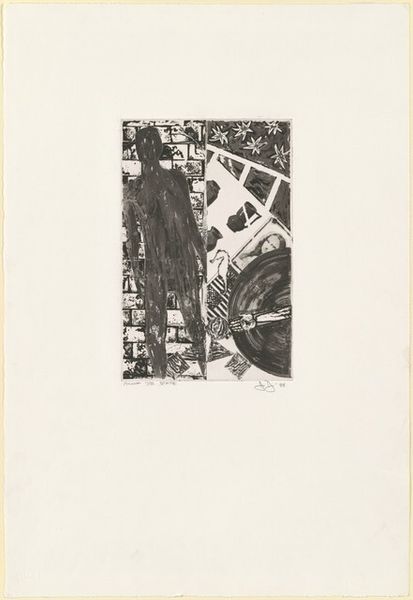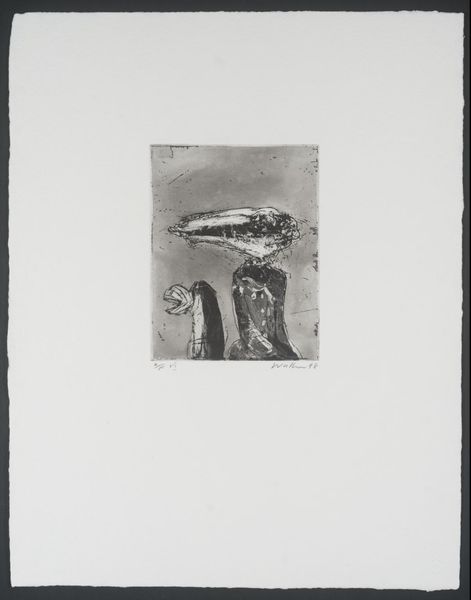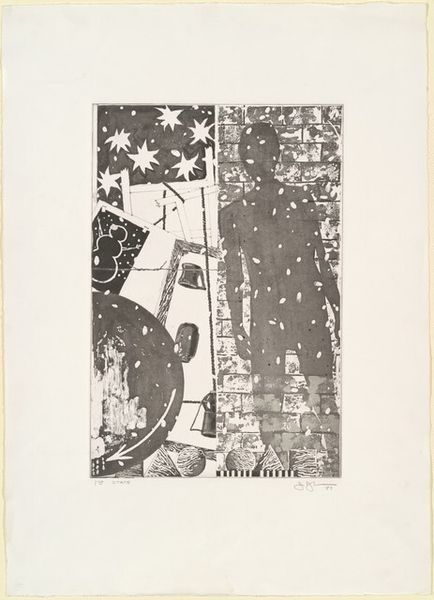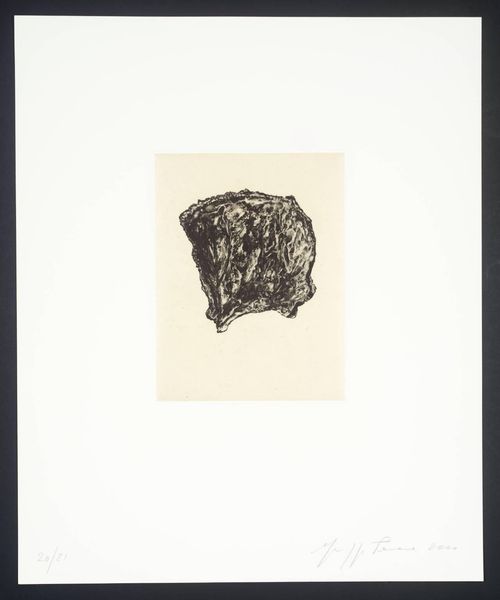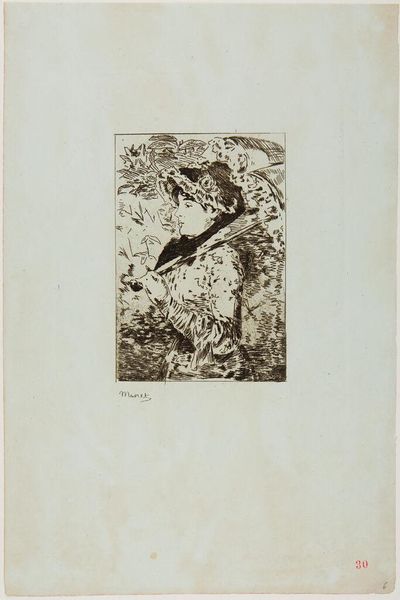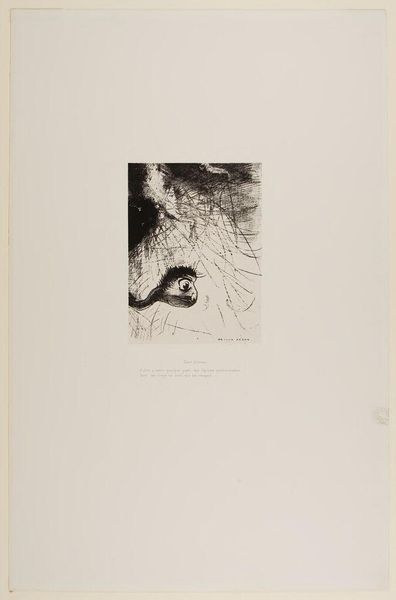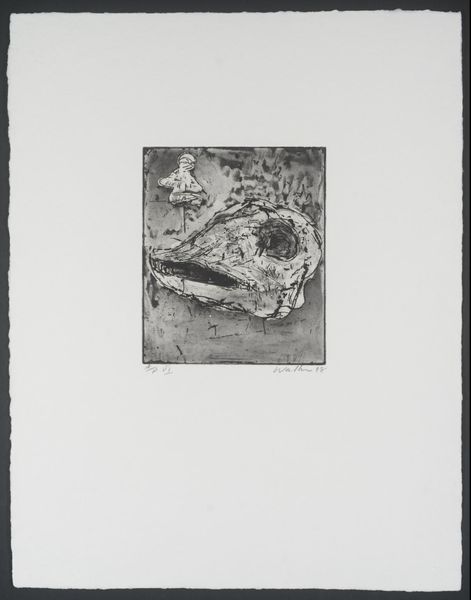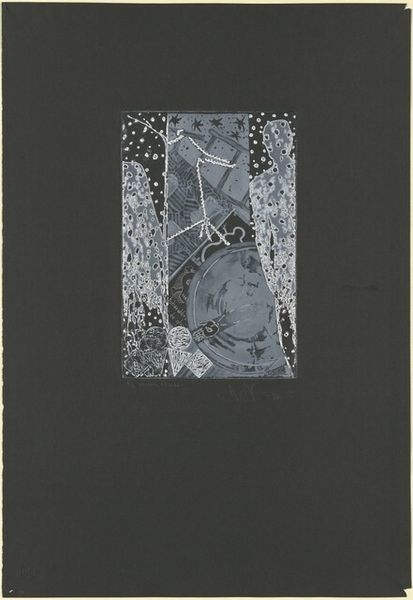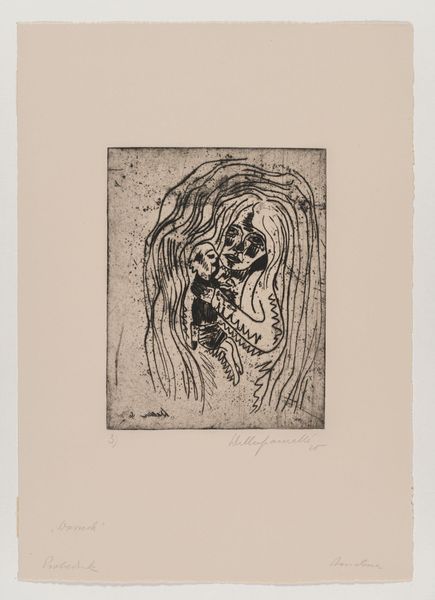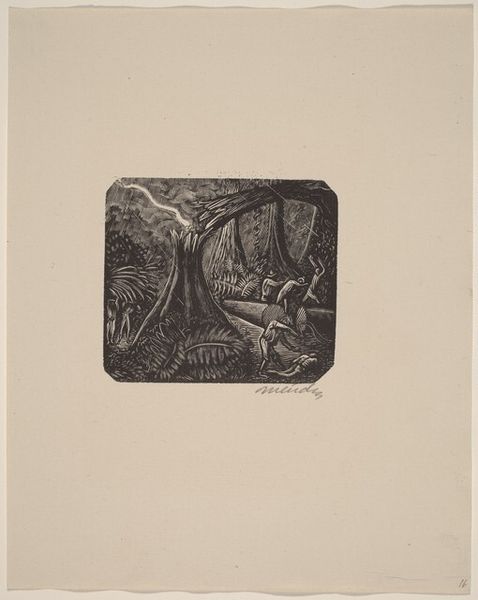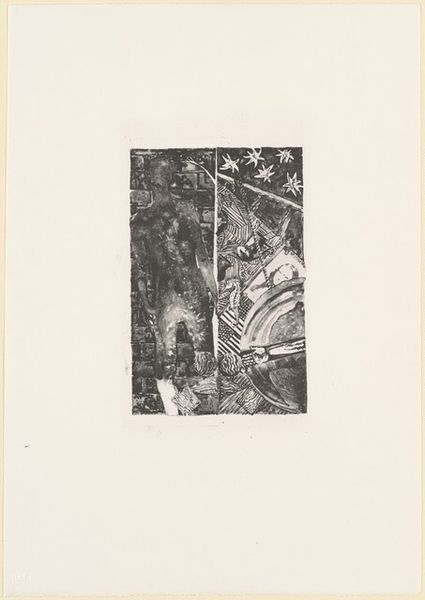![Winter [1/2 trial proof] by Jasper Johns](/_next/image?url=https%3A%2F%2Fd2w8kbdekdi1gv.cloudfront.net%2FeyJidWNrZXQiOiAiYXJ0ZXJhLWltYWdlcy1idWNrZXQiLCAia2V5IjogImFydHdvcmtzL2ZjZTEwNjBmLTg2MmQtNDU3ZC04ZjZhLWFjMjI5NmI1ZmIzMi9mY2UxMDYwZi04NjJkLTQ1N2QtOGY2YS1hYzIyOTZiNWZiMzJfZnVsbC5qcGciLCAiZWRpdHMiOiB7InJlc2l6ZSI6IHsid2lkdGgiOiAxOTIwLCAiaGVpZ2h0IjogMTkyMCwgImZpdCI6ICJpbnNpZGUifX19&w=1080&q=75)
graphic-art, print, etching
#
graphic-art
# print
#
etching
#
neo-dada
#
abstraction
#
modernism
Dimensions: plate: 24.45 x 16.19 cm (9 5/8 x 6 3/8 in.) sheet: 55.56 x 39.05 cm (21 7/8 x 15 3/8 in.)
Copyright: National Gallery of Art: CC0 1.0
Curator: Looking at this print, entitled "Winter [1/2 trial proof]" created by Jasper Johns in 1986, it immediately feels like a puzzle—a series of veiled forms overlaid with a screen of abstract markings. Editor: It does have that disquieting feel, doesn’t it? I'm immediately drawn to the textures, the layers of etching creating a palpable surface. You can almost feel the hand of the artist. I wonder about the choice to keep it in black and white – is it just a reflection of the available materials, or something deeper? Curator: More likely the latter, actually. Johns frequently used monochrome palettes to defamiliarize his subject matter. There is that nod to mass media through printing, making it more accessible by playing into common methods of production. That is also just part of modern art. Editor: Mass media playing with labor-intensive etching though? A deliberate tension, it seems. The print's existence as a "trial proof" speaks to this rigorous material exploration, the artist grappling with the plate to coax out these complex tonal relationships. I would really want to study Johns' press if I could, do you know how the impressions where made and in what sequence? Curator: While details are vague on the specific tools he may have employed for this particular piece, Johns often embraced the accidental, disrupting conventional art practices of his time, leading the way for Neo-Dadaism as a popular style in the mainstream art community. It has that pop element that really ties it into societal trends. Editor: It also pulls you in because it makes you do the labor yourself in interpreting it, because it does pull from popular cultural lexicon while simultaneously obfuscating. Seeing this etching just reminds me of the skill of labor involved with that printmaking and production and everything it represents. Curator: Absolutely, there's a dialogue happening here, a challenge to traditional modes of representation and viewing. The fragmented forms hint at something beyond the surface, encouraging contemplation about social messaging and its implications. Editor: This really exemplifies his genius for repurposing common images into commentary. It speaks to labor and the art industry. This has given me something to think about, truly. Curator: Agreed. Its enduring quality lies in the capacity to engage with his commentary to this day, inviting us to consider these societal reflections.
Comments
No comments
Be the first to comment and join the conversation on the ultimate creative platform.

